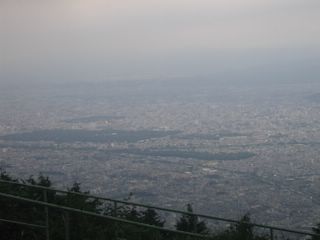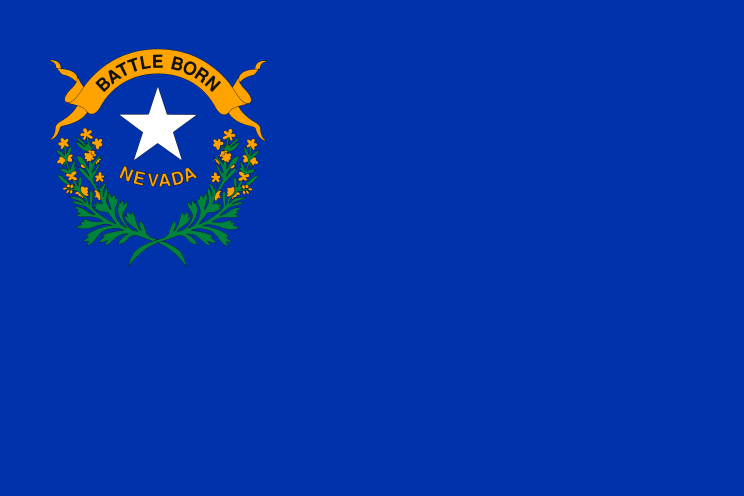it's long past time that i should have put a serious post up about our new motorcycle. but before i get into the specifics, it's worth establishing the context in which riding is done in Japan. first of all, the road system is a lot more orderly than Taiwan's: people actually stop for red lights here. having said that, those lights (and red ones in particular) are so numerous that a person couldn't easily be blamed for running them. coming to America from England one is surprised at the prevalence of traffic lights as a control device; roundabouts and other such complicated inventions don't seem to have made the transatlantic trip. nevertheless, let me assure you that Japan has one-upped the United States in this critical measure of infrastructure--traffic lights are absolutely everywhere, sometimes several sets per couple of hundred meters.
further to that, they can be somewhat confusing, to say the least. as the picture below shows, not only are the lights set on their side, but often they consist of more than the typical three lights, several of which can be lit at the same time, including conflicting signals. for example, the top red light may be lit and the straight arrow on the bottom row, meaning you can go straight ahead but may turn neither right nor left, to name one of many possible combinations.

i like traffic lights, but only when they're green...
and left, of course, would be akin to turning right in America, given that we drive on the left here. growing up, i had always people say that only England and Japan drove on the left, but having done a little research into the matter i have found that there are many more who favor right-hand-drive. from our travels in Southeast Asia last year i had learned this by personal experience, with all of the countries we visited (Thailand, Malaysia, Singapore, Indonesia, Hong Kong and Macau) taking the left-side approach. Indeed, there are more still, some 74 countries in all, though as you will see they make up just a small portion of the Earth's surface area:

the leftist world of driving.
so getting used to driving on the left was a bit of a challenge at first, but now it's hard to contemplate how things would be the other way around. the biggest problem here is figuring out the real, unspoken rules of the road. visitors to America from England are often bemused by more than the number of traffic lights; the deference paid pedestrians by drivers is often well over the top. as a child i remember being taught road safety at playschool, and we three-year-olds were left with no doubt that it was the responsibility of the pedestrian to watch out for himself. it makes sense, i think, given that a car would probably do the most damage in an altercation. anyway here, once again, Japan has upped the stakes and presented new absurdities to the world of transportation. when we were insuring our motorcycle a few months ago, we were assured that collision insurance was generally unnecessary, since the practice is typically to assign blame to the larger vehicle in the event of a collision. which works out well for us driving a fairly small bike, but i do have to carry tens of millions of yen worth of liability insurance in case i hit anything smaller than me. including bicycles, which are the true kings of the road in Japan. as the scooter was to Taiwan, so the bicycle is to Japan; they are everywhere, and with their little bells they control the flow of all movement from the sidewalks to the large city streets. it really is something to see. as is our new motorcycle, shown below:

thehonda, and a collage showing (clockwise from top left): another view; the old Yamaha of Taiwan; the Japanese license plate (with a few numbers erased); and the engine, showing a displacement of 249 mighty ccs.

in Taiwan i had a 150cc Yamaha, but here i went for a slightly bigger 250cc Honda. i had wanted a 400cc Honda, but you have to pay a pretty large shaken fee for anything over 250. anyway the VTR, as it's called, has been quite honorable, being quite a bit faster than the Yamaha and having taken us all the way to Kyoto and back in July. it's a nice ride, though a bit dirty in terms of emissions (as are, surprisingly, most of the vehicles in Japan) and we're glad we bought it. then again, the Yamaha had distinct pluses: it cost the equivalent of about $320, and i sold it for the same after six months of riding. the Honda followed Japanese custom by being about six times more expensive. needless to say, i'm hoping the resale value will be more in the Japanese style, too.
further to that, they can be somewhat confusing, to say the least. as the picture below shows, not only are the lights set on their side, but often they consist of more than the typical three lights, several of which can be lit at the same time, including conflicting signals. for example, the top red light may be lit and the straight arrow on the bottom row, meaning you can go straight ahead but may turn neither right nor left, to name one of many possible combinations.

i like traffic lights, but only when they're green...
and left, of course, would be akin to turning right in America, given that we drive on the left here. growing up, i had always people say that only England and Japan drove on the left, but having done a little research into the matter i have found that there are many more who favor right-hand-drive. from our travels in Southeast Asia last year i had learned this by personal experience, with all of the countries we visited (Thailand, Malaysia, Singapore, Indonesia, Hong Kong and Macau) taking the left-side approach. Indeed, there are more still, some 74 countries in all, though as you will see they make up just a small portion of the Earth's surface area:
the leftist world of driving.
so getting used to driving on the left was a bit of a challenge at first, but now it's hard to contemplate how things would be the other way around. the biggest problem here is figuring out the real, unspoken rules of the road. visitors to America from England are often bemused by more than the number of traffic lights; the deference paid pedestrians by drivers is often well over the top. as a child i remember being taught road safety at playschool, and we three-year-olds were left with no doubt that it was the responsibility of the pedestrian to watch out for himself. it makes sense, i think, given that a car would probably do the most damage in an altercation. anyway here, once again, Japan has upped the stakes and presented new absurdities to the world of transportation. when we were insuring our motorcycle a few months ago, we were assured that collision insurance was generally unnecessary, since the practice is typically to assign blame to the larger vehicle in the event of a collision. which works out well for us driving a fairly small bike, but i do have to carry tens of millions of yen worth of liability insurance in case i hit anything smaller than me. including bicycles, which are the true kings of the road in Japan. as the scooter was to Taiwan, so the bicycle is to Japan; they are everywhere, and with their little bells they control the flow of all movement from the sidewalks to the large city streets. it really is something to see. as is our new motorcycle, shown below:

thehonda, and a collage showing (clockwise from top left): another view; the old Yamaha of Taiwan; the Japanese license plate (with a few numbers erased); and the engine, showing a displacement of 249 mighty ccs.

in Taiwan i had a 150cc Yamaha, but here i went for a slightly bigger 250cc Honda. i had wanted a 400cc Honda, but you have to pay a pretty large shaken fee for anything over 250. anyway the VTR, as it's called, has been quite honorable, being quite a bit faster than the Yamaha and having taken us all the way to Kyoto and back in July. it's a nice ride, though a bit dirty in terms of emissions (as are, surprisingly, most of the vehicles in Japan) and we're glad we bought it. then again, the Yamaha had distinct pluses: it cost the equivalent of about $320, and i sold it for the same after six months of riding. the Honda followed Japanese custom by being about six times more expensive. needless to say, i'm hoping the resale value will be more in the Japanese style, too.





































































